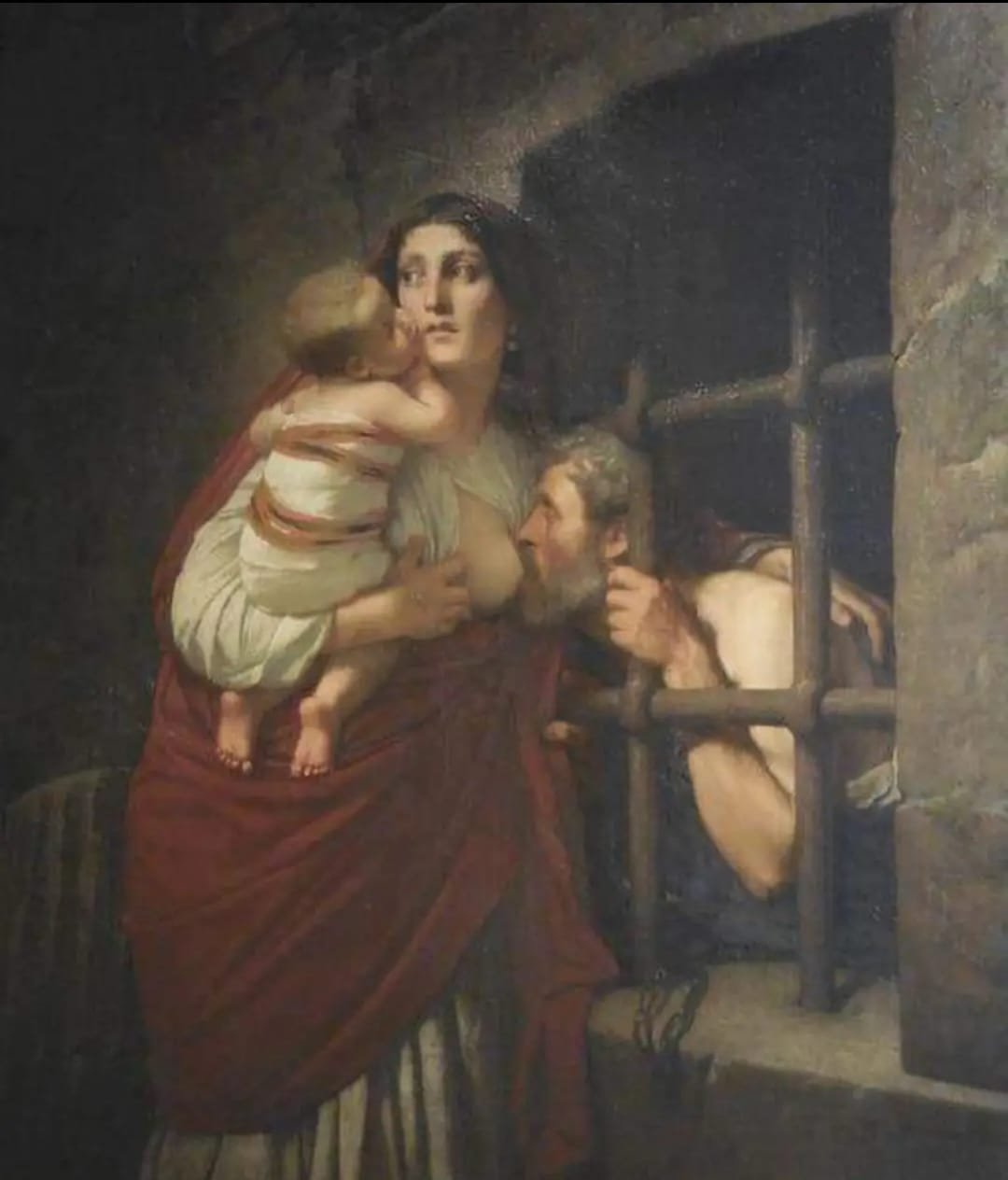When a painting of a young woman breastfeeding an old man in a dimly lit prison cell sold for 30 million euros, many viewers reacted with shock and confusion. At first glance, the artwork seems unsettling, even perverse. But behind this image lies a deeply human story of compassion, sacrifice, and survival — a story that has fascinated Europe for centuries and continues to hold immense artistic and cultural value.
The Story Behind the Image
The subject of the painting comes from an old tale known as Roman Charity (Caritas Romana). During the reign of Louis XIV in France — and in earlier Roman accounts — a poor man was sentenced to death by starvation for stealing a loaf of bread. His only visitor was his daughter, who was searched thoroughly before entering his prison cell, ensuring she could not sneak in food.
Yet, months later, to the astonishment of the guards, the man remained alive and showed no signs of wasting away. Suspicious, the authorities spied on the daughter and discovered the extraordinary truth: she was secretly breastfeeding her father, sustaining his life with her own milk.
Rather than condemning the act, the judges were moved by her devotion. They saw it not as indecent but as the ultimate act of filial piety and compassion, and the father was eventually pardoned and released.
Why the Painting Matters
In the Renaissance and Baroque periods, this story became a celebrated subject for artists. Masters such as Peter Paul Rubens, Guido Reni, and their contemporaries painted versions of Roman Charity. Far from being scandalous, the scene was regarded as a moral allegory — symbolizing the power of love, the reversal of roles between parent and child, and the extraordinary capacity of women to nurture life even under the harshest circumstances.
The painting that sold for €30 million belongs to this tradition. Its high price reflects several key factors:
- Historical Significance – It preserves a centuries-old story that challenges cultural norms and highlights universal human values of compassion, sacrifice, and duty.
- Artistic Rarity – Works on this subject are few in number, and those that survive are often housed in museums. A high-quality piece reaching the private market naturally attracts immense interest.
- Emotional Depth – Collectors and historians value not only the technical mastery of the painting but also its emotional weight — a taboo-breaking image that conveys love stronger than law or punishment.
- Cultural Symbolism – The work speaks to timeless human dilemmas: how societies punish, how families endure suffering, and how compassion transcends judgment.
A Message Across Centuries
What may look unsettling to modern eyes was, in its own time, a profound moral statement. The daughter’s act was not interpreted as scandal but as the highest expression of selflessness.
Today, the painting’s staggering price tag reflects more than market value. It is a recognition that art is not just about beauty — it is about stories that force us to confront human limits and redefine compassion.
At a time when questions of justice, punishment, and mercy remain central to global debates, the story of Roman Charity still resonates. It reminds us that love can exist in the harshest of places — even in a cold prison cell — and that sometimes, compassion can rewrite the harshest verdicts.












